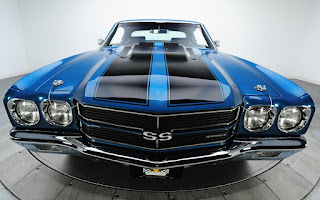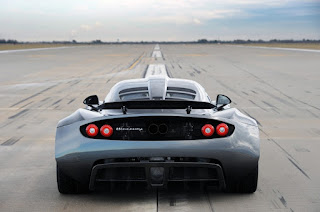DCT - The manual transmission of the speed seekers...
Most of the F1 drivers have no problem in dealing with two peddles and some paddles but some of the manual loving motorists insist that life is meaningless without some toe and heel dancing in the cockpit.
In fact “ It is impossible to buy a Ferrari or Lamborghini or Nissan gt-r with manual transmission”.
Frankly, it is not a surprise that less than 4% of cars in U.S. are manually controlled.
Apart from U.S., most of the world still prefers manual transmission.
The two known types of transmission are Automatic and manual.
Also continuous variable transmission is third kind of transmission.
The manual transmission is further divided into two types:-
1 Single clutch transmission
2 Dual clutch transmission
The most common used type of transmission is single type one.
But how does this type of transmission work.
How does a manual transmission work?
This manual or standard transmission transfers power from the engine to the differential using a clutch and pairs of gears that are manually selected using the gear selector and locked to the output shaft.
The clutch is positioned between the engine’s flywheel and the transmission. Normally the clutch is engaged, and locks the transmissions input shaft to the flywheel. When the clutch pedal is depressed, the clutch is disengaged by a thrust bearing, and no power is transferred. With the clutch disengaged it is possible to select gears. To start the vehicle moving, the clutch is slowly released, and slipped slightly. It is important not to ride the clutch once you are moving (by resting your foot on it for example) because this can lead to clutch slippage (which over time can cause clutch failure) or premature thrust bearing problems. Gears are normally selected using a shift lever, often mounted on the floor, but sometimes mounted on the dash or steering column.
A dual-clutch gearbox, by contrast, uses two clutches, but has no clutch pedal.
Sophisticated electronics and hydraulics control the clutches, just as they do in a standard automatic transmission. In a DCT, however, the clutches operate independently. One clutch controls the odd gears (first, third, fifth and reverse), while the other controls the even gears (second, fourth and sixth). Using this arrangement, gears can be changed without interrupting the power flow from the engine to the transmission.
Unlike a conventional manual gearbox, which houses all of its gears on a single input shaft, the DCT splits up odd and even gears on two input shafts. How is this possible? The outer shaft is hollowed out, making room for an inner shaft, which is nested inside. The outer hollow shaft feeds second and fourth gears, while the inner shaft feeds first, third and fifth.
Here, one clutch controls second and fourth gears, while another, independent clutch controls first, third and fifth gears. That's the trick that allows lightning-fast gear changes and keeps power delivery constant. A standard manual transmission can't do this because it must use one clutch for all odd and even gears.
And since the dual-clutch gearbox does not require a torque converter, it's more efficient than an automatic transmission.
Automakers were counting on those gearboxes to improve fuel economy ratings 6 to 10 percent without compromising performance.
After Volkswagen introduced dual- clutch transmissions in 2003, several mass-market automakers followed suit, only to encounter quality bugs and consumer complaints. Unfortunately, adverse business circumstances prevented its further development.
Some of the big horses that are result of dual clutch transmission are:- Porsche 911 carrera , Bmw M4, Audi TT-S, Mercedes-Benz AMG GT-S, Nissan GT-R, Lamborghini Huracan, McLaren 12-c and many more.
Image Source: Google
In fact “ It is impossible to buy a Ferrari or Lamborghini or Nissan gt-r with manual transmission”.
Frankly, it is not a surprise that less than 4% of cars in U.S. are manually controlled.
Apart from U.S., most of the world still prefers manual transmission.
The two known types of transmission are Automatic and manual.
Also continuous variable transmission is third kind of transmission.
The manual transmission is further divided into two types:-
1 Single clutch transmission
2 Dual clutch transmission
The most common used type of transmission is single type one.
But how does this type of transmission work.
How does a manual transmission work?
This manual or standard transmission transfers power from the engine to the differential using a clutch and pairs of gears that are manually selected using the gear selector and locked to the output shaft.
The clutch is positioned between the engine’s flywheel and the transmission. Normally the clutch is engaged, and locks the transmissions input shaft to the flywheel. When the clutch pedal is depressed, the clutch is disengaged by a thrust bearing, and no power is transferred. With the clutch disengaged it is possible to select gears. To start the vehicle moving, the clutch is slowly released, and slipped slightly. It is important not to ride the clutch once you are moving (by resting your foot on it for example) because this can lead to clutch slippage (which over time can cause clutch failure) or premature thrust bearing problems. Gears are normally selected using a shift lever, often mounted on the floor, but sometimes mounted on the dash or steering column.
A dual-clutch gearbox, by contrast, uses two clutches, but has no clutch pedal.
Sophisticated electronics and hydraulics control the clutches, just as they do in a standard automatic transmission. In a DCT, however, the clutches operate independently. One clutch controls the odd gears (first, third, fifth and reverse), while the other controls the even gears (second, fourth and sixth). Using this arrangement, gears can be changed without interrupting the power flow from the engine to the transmission.
Unlike a conventional manual gearbox, which houses all of its gears on a single input shaft, the DCT splits up odd and even gears on two input shafts. How is this possible? The outer shaft is hollowed out, making room for an inner shaft, which is nested inside. The outer hollow shaft feeds second and fourth gears, while the inner shaft feeds first, third and fifth.
Here, one clutch controls second and fourth gears, while another, independent clutch controls first, third and fifth gears. That's the trick that allows lightning-fast gear changes and keeps power delivery constant. A standard manual transmission can't do this because it must use one clutch for all odd and even gears.
And since the dual-clutch gearbox does not require a torque converter, it's more efficient than an automatic transmission.
Automakers were counting on those gearboxes to improve fuel economy ratings 6 to 10 percent without compromising performance.
After Volkswagen introduced dual- clutch transmissions in 2003, several mass-market automakers followed suit, only to encounter quality bugs and consumer complaints. Unfortunately, adverse business circumstances prevented its further development.
Some of the big horses that are result of dual clutch transmission are:- Porsche 911 carrera , Bmw M4, Audi TT-S, Mercedes-Benz AMG GT-S, Nissan GT-R, Lamborghini Huracan, McLaren 12-c and many more.
Image Source: Google






Comments
Post a Comment